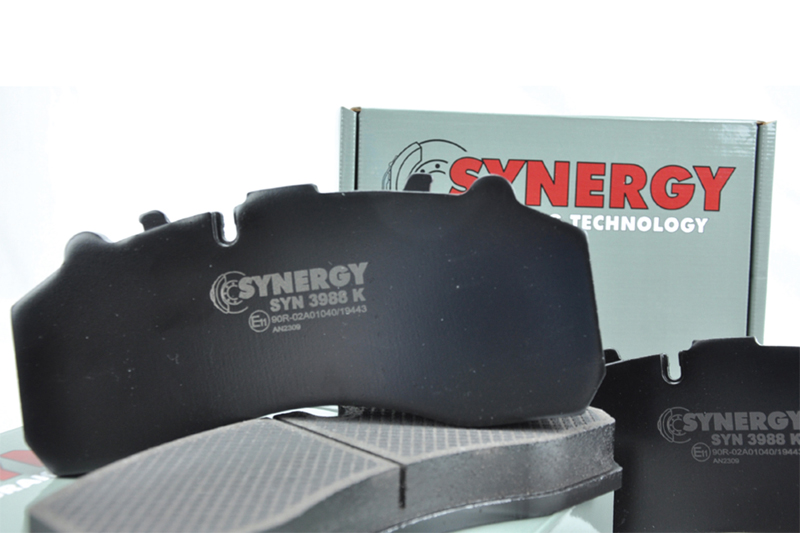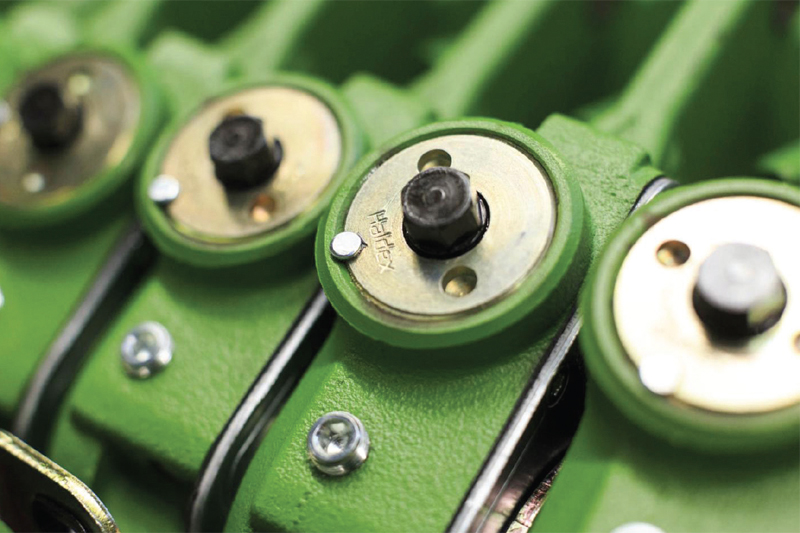
When it comes to brakes, the consequences of failure are frightening; as perhaps the most safety-critical part of a truck, it’s important to never take anything for granted. Toby Clark discusses the points we think it’s worth repeating about brake inspection and servicing.
The DVSA’s latest ‘Guide to Maintaining Roadworthiness’ says that “every safety inspection must assess the braking performance of the vehicle or trailer” and advises that a calibrated roller brake tester (RBT) should be used “to measure individual brake performance and overall braking efficiencies”. But ideally the vehicle should be fully laden for the test, and you need to know how to interpret the results, particularly the balance across each axle — a vehicle can pass its MoT with an imbalance of as much as 30% across an axle.
But roller brake tests aren’t everything: proper brake maintenance involves listening to what the driver has to say about a vehicle, and simply spending the time to look at the components: as one fleet engineer put it to us: “if you are a good mechanic you should be spending at least five minutes under each wheel end.”
For instance, blue spots on the disc indicate sustained high temperatures due to hard braking or poorly-balanced brakes, and should be investigated before they result in cracking. Heat checking on a brake disc — light, short radial marks — is a common result of the normal heating and cooling of the rotor, and should not be a worry. However, if the lines get longer and persist, it indicates a more serious heat problem (perhaps due to binding or badly adjusted calipers or disc runout) and the check marks might develop into cracks.
Brake scoring is again not serious until it gets excessive: manufacturers suggest that if the circular grooves in the disc are more than 0.5mm deep — a feeler gauge helps here — the disc should be resurfaced (component makers don’t like the term ‘skimming’) unless, of course, that would take it below its minimum thickness.
Disc runout is often the cause of brake problems, from judder to serious pad damage. This could be from a disc that has been made wrongly, but is much more likely to be due to corrosion or dirt on the mounting face, or a disc that has warped under the heat of excessively hard braking. Either way, the traditional method of running a dial test indicator on the disc face still works; measuring near the outside radius of the disc, around 0.07mm is usually regarded as the maximum acceptable runout figure.
Dirt or corrosion can also mean that new brake pads are a tight fit in the carrier; it is always a good idea to clean the mating surface but, as ever, this should be done with the greatest of care to avoid hazardous brake dust being spread around. And when fitting replacement disc rotors, be sure that the hub and disc splines have a suitable coating of copper grease if it is specified.
It’s easy to overlook the electrical parts of a braking system, but these should be inspected too. The MoT test has some pretty basic requirements — is there an ISO 7638 ABS/EBS cable between tractor and trailer, for instance — but a checklist of connectors, cables and sensors goes a long way to maintaining safety. When replacing disc brake pads, check the leads for the wear warning indicators: some replacements will have them already attached, while for other applications they may be a separate item.
Likewise, air hoses and connectors should be inspected in a methodical way — hoses in particular do not last forever, and replacements should meet the DIN74310 standard. Another critical part of the compressed air system is the air dryer cartridge; a replacement must be torqued down correctly and then tested for function: Bendix suggests that you check that the compressor performs an air dryer purge correctly, and then do a soap bubble test for leaks.
Automatic slack adjusters (ASAs or ABAs) have been a mandatory fitment on most trucks’ drum brakes for decades, but there is still a lack of understanding about how to look after them. One DVSA Vehicle Examiner we spoke to said he had come across “many in-service commercial vehicles and trailers… with defective brakes as a result of automatic slack adjusters being faulty or not functioning correctly through poor maintenance procedures or being incorrectly installed”.

Automatic slack adjusters must not be manually adjusted (as long as they have been installed correctly) but should be examined at every regular inspection: check that there is enough stroke available for the pushrod, and that the bracket is aligned correctly, and look for cracks, impact damage and broken fasteners.
The internal mechanism of an ASA does wear out; the ‘de-adjustment torque’ needed to move the worm shaft hexagon head anticlockwise should be above a certain level. A new unit needs around 40Nm to click the shaft round to the next tooth on the clutch mechanism; once it is down to about 18Nm you should replace the mechanism. Service packs are available, but most operators would just replace the whole unit.
As with any safety-critical part on a vehicle, you need a properly calibrated torque wrench to work on slack adjusters. Some manufacturers warn that you must NOT use impact wrenches (air or electric) on their moving parts: Haldex, for instance, says “internal components may be damaged! = Warranty invalid”.
Slack adjusters also need to be lubricated, though greasing intervals vary: a haulage truck every six months or so, a refuse vehicle every three months, while an offroad vehicle (subject to frequent wheel washing) ought to be greased and inspected once a month. In any case, only use a conventional lithium- or calcium-based grease, and never a molybdenum disulphide (‘moly’) grease.
Aftermarket braking materials — discs, pads, drums and shoes — must comply with standard R90, which regulates the braking performance and compatibility of these components. The friction performance of the replacement part must be within +/-15% of OE specification, and there is a thermal fatigue test. “It relates to stopping power,” says Andrew Kibler of Juratek, adding “We would see it as a minimum standard. Fleet engineers certainly should be aware of it!”
To meet the R90 standard, the manufacturer has to measure every batch that is produced for its friction parameters and physical properties. These records are kept and may be examined later. The standard is overseen by the VCA in the UK, which undertakes regular factory audits. Customers should look for the ECE R90 mark on the product itself. You can also tell where the component’s conformance testing took place from the markings on it: a circle, the letter E and a number — E11 indicates the UK, while E1 indicates Germany.
Another growing issue with brake components is the materials they are made of: while asbestos has been banned for thirty years, copper has become a key part of braking materials for its heat-conducting and noise-reducing abilities. But as brakes wear, they shed tiny particles, and copper from brakes has been found to contaminate waterways. There are already agreement in some US states to limit the copper content in brake systems; while European countries have yet to follow suit, some aftermarket manufacturers offer copper-free pads and shoes.








